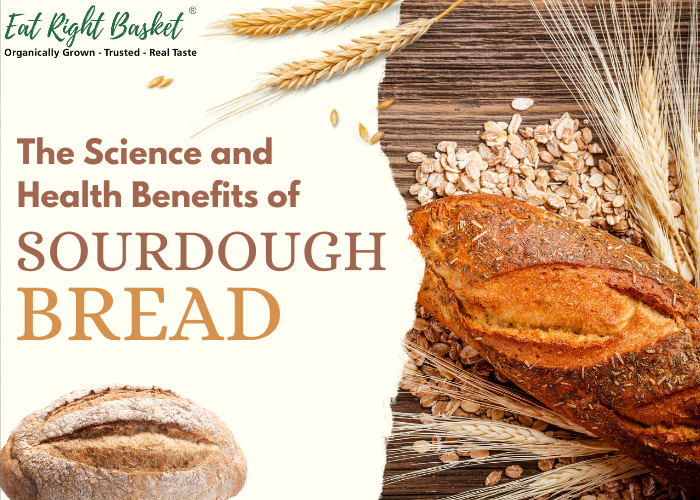Motherhood is a profound experience that not only shapes the life of a woman but also plays a vital role in the survival and growth of humanity. The ability to carry and nurture a life within is a remarkable phenomenon that underscores the strength and resilience of mothers everywhere. Despite the beauty and joy of motherhood, many women face significant risks during pregnancy and childbirth and that was the reason why National Safe Motherhood was pitched as a special day on every 11th of April. This day is a poignant reminder of the journey of motherhood filled with love, sacrifice, and boundless strength. Why 11th of April? This day honours the birth anniversary of Kasturba Gandhi, wife of Mahatma Gandhi, and serves as a powerful tribute to her legacy of social justice and woman empowerment. National Safe Motherhood Day aims to raise awareness about access to quality healthcare, emphasizing the importance of safe motherhood for all women. By acknowledging the struggles and triumphs of mothers, we can work towards creating a world where every pregnancy leads to a healthy mother and baby. India has shown a rich history and evolving themes. Initially launched in 2003 by the White Ribbon Alliance India (WRAI), the day aimed at reducing maternal mortality and morbidity. Over the years, 11th April has focused on reducing maternal mortality and improving access to healthcare, skilled birth attendants and emergency obstetric care, importance of nutrition and anaemia control during pregnancy and role of family and community support in ensuring safe motherhood. There is a very unique dichotomy between approaches to safe motherhood in rural and urban India. Rural areas, despite having limited access to basic facilities like healthcare, sanitation, and education, often possess traditional wisdom that promotes healthy eating habits and lifestyles. In contrast, urban areas have better access to these facilities, but often lack the traditional knowledge and practices that foster healthy living. Urban dwellers are frequently exposed to fast food, sedentary lifestyles, and environmental pollution, which can lead to a higher risk of chronic diseases. According to an article published by Bangalore Mirror, incidence of PCOS (Polycystic Ovarian Syndrome) and PCOD (Polycystic Ovarian Disease) nowadays has become very high. Previously only 1 out of 10 girls were affected from this health condition but now nearly 8 out of 10 are diagnosed with either obesity or lean PCOS. https://bangaloremirror.indiatimes.com/bangalore/others/docs-report-staggering-rise-in-pcos/pcod-cases-among-teens/articleshow/117276952.cms Ms. Deepti Jain of @Nurchuringu, a nutritionist associated with Eat Right Basket, highlights a concerning trend among teenagers: the rising prevalence of Polycystic Ovary Syndrome (PCOS) and Polycystic Ovary Disorder (PCOD). These conditions not only affect physical health but also take a significant toll on the emotional and mental well-being of young girls, particularly when it comes to conceiving for pregnancy. The emotional, physical, and mental challenges associated with PCOS and PCOD can be overwhelming, making it essential to address these issues through a comprehensive approach that includes nutrition, lifestyle modifications, and emotional support. By acknowledging the complexities of these conditions, we can work towards creating a more supportive environment that empowers young girls to manage their health and well-being effectively. Ms. Jyoti Awasthi, CEO Eat Right Basket says that increasing use of pesticides and all sorts of synthetic preservatives is proving dangerous for all, especially children who, due to their higher metabolic rate, tend to absorb more pesticides than adults. Premature birth, low birth weight, and birth defects can all result from pesticide consumed through even regular food during pregnancy. More and more studies are showing that pesticides may have an impact on endocrine function, which may impact reproductive health. Ms. Kanika Rajput, Founder of @wholesoul_by_kanika, @Rajputsartisanwellness, an organization that promotes conscious and sustainable living, believes that though delivering a child is a very natural and normal process, our lifestyle and eating habits add complexity and fear in mothers. This needs to be tackled from a very early age. This day serves as a call to action, encouraging governments, healthcare providers, and communities to collaborate in ensuring safe motherhood. By sharing inspiring stories, quotes, and insights, we can foster a sense of solidarity and support for mothers worldwide. Join us in celebrating the power of motherhood and working towards a future where every mother has access to the care she deserves. In an effort to promote reproductive well-being, Eat Right Basket is organising a campaign with its expert team to raise awareness about caring for reproductive health from adolescence onwards and ensuring safe motherhood. We will capture insights from this campaign and continue to write blogposts around the subject. So do watch out for this space for very useful and interesting information that may help you in your journey to motherhood.
“Cook Right with Eat Right Basket” Contest: A Celebration of Sweet Delights
At Eat Right Basket, we’re passionate about promoting healthy and organic eating. To celebrate the spirit of cooking and creativity, we organized a cooking contest called “Cooking Right with Eat Right Basket” on February 2nd, 2025. The theme of the contest was sweet dishes, and we were overwhelmed with an incredible response from participants across Delhi and NCR. After careful consideration, our judges shortlisted six outstanding recipes that showcased creativity, innovation, and a passion for healthy cooking. In this blog, we’ll take you through each of these recipes, highlighting the main ingredients and cooking methods used. Recipe 1: Ragi Laddu The first recipe that caught our attention was Ragi Laddu, made with ragi flour, jaggery powder, ghee, almonds, cashews, edible gum, pumpkin seeds, melon seeds, and flax seeds. This traditional recipe is a perfect blend of nutrition and taste. Ingredients: Ragi flour: 250 gms, Jaggery Powder: 150 gms, Ghee: 250 gms, Almonds:50 gms, Cashews- 50 gms, Edible gum: 50 gms Pumpkin Seeds: 50 gms, Melon Seeds: 50 gms, Flax Seeds: 50 gms Cooking Instructions: 1. In a Kadhaai, take Desi Cow Ghee, once it is heated add ragi Flour. 2. Keep shallow frying it on low flame till the mixture leaves ghee and becomes of flowing consistency. 3. Now add chopped almonds, cashew, shallow fried gond (edible gum). 4. Add roasted flax seeds, pumpkin Seeds, melon seeds and mix this well. 5. Add jaggery powder, mix it well. 6. Turn down the flame but continue stirring it a bit. 7. Once this mix cools down, roll its laddus with gentle hands. Recipe 2: Hari Matar ka Halwa with Gajar ki Saunth The next recipe that impressed us was Hari Matar ka Halwa with Gajar ki Saunth. This recipe was made with peas, khoya/fresh malai/condensed milk, ghee, jaggery, dry fruits, elaichi, carrots, and ginger. This innovative recipe combines the freshness of peas with the sweetness of carrots Ingredients: Peas – 600gm (unpeeled), Khoa – 200gm, Ghee – 200gm, Sugar – 300gm, Cashew – 50gm, Almonds – 50gm, Elaichi – 10gm, Adrak – 20gm, Saunf (Fennel Seeds)- 10gm Cooking Instructions: 1. Take two table spoon desi cow ghee in a kadhai 2. Sauté peeled green peas in it on low flame till they turned slightly brown and kept aside. 3. In a pan add two teaspoons of Desi Cow Ghee and add crushed saunf (Fennel Seeds), very fine chopped ginger and crushed cardamom, then add jaggery syrup. 4. Let it boil and then simmer till the mixture thickens to a paste. 5. Put the green peas pan again on the stove. 6. Add malai (fresh cream)/ khoa to it. Mix well gently so that no lumps are formed. 7. Add the jaggery paste to this mixture and keep cooking on low flame till it turns dry, dark and cooked. 8. Sprinkle dry fruits. 9. Hari Matar ka halwa is ready to serve. Recipe 3: Chana Barfi Chana Barfi was another very interesting entry in the cooking contest. It tasted delicious and its recipe was also very unique. Made with roasted chickpeas (Bhuna Chana), almonds, cashews, white rice poha, dhage wali mishri, and milk. Another speciality of this recipe is that no ghee or oil was used in this recipe. Ingredients: Roasted chana (Bhuna Chana) 250 gm, Almond 150 gm, Cashew 150 gm, Roasted Poha 100 gm, Dhage wali Mishri 350 gm, Milk for binding (5/6 tbsp or as required) Cooking Instructions: 1. Dry roast white rice poha till it turns golden brown. 2. Dry grind roasted deskinned roasted chickpea (bhuna chana), cashew, almonds, dhaaga mishri, cardamom, and roasted white rice poha to fine powder. 3. Chop some almonds separately for layering on top. 4. Gently knead the prepared flour with help of milk till it becomes a perfect soft dough. 5. Transfer the dough into a square box, spread even, and leave it for setting. 6. Spread chopped almonds on the top. 7. Cut Burfi of the desired size. 8. Chana Burfi is Ready to serve. Recipe 4: Gajar Ka Halwa (Vegan) The contest also saw a vegan sweet dish made without the use of ghee or milk – Gajar Ka Halwa (Vegan), made with carrots, coconut, raisins, cashews, almonds, seeds, and jaggery. This vegan recipe is a perfect dessert option for those who have lactose intolerance or are vegan by choice. Others may also have it as its highly nutritious and tastes different from the regular Gajar ka Halva. Ingredients: Red Carrot 1.5 kg, Fresh Coconut 1 pc, Raisins: 30 gm, Cashews 150 gms, Almonds 100 gms, Seeds 50 gms each, Jaggery 500 gms Cooking Instructions: 1. Grate carrots and steam them in a kadhai until soft (approx 15 to 20 mins on low flame). 2. Meanwhile, grind one fresh coconut, jaggery, some cashews (optional), and 4-5 cardamom in a grinder. 3. Add this mixture to grated and steamed carrots. 4. Mix everything well and cook it further for few minutes till the carrots are cooked well 5. Garnish it with seeds and nuts. Recipe 5: Whole Wheat Choco Banana Cake No sweet dish contest is complete without the entry of cakes in it. So we had Whole Wheat Choco Banana Cake, made with whole wheat flour, brown sugar, and bananas as the main ingredients. This healthy cake option is perfect for those looking for a guilt-free dessert. Ingredients: Whole Wheat flour 180 gms, Brown Sugar 130 gm, Banana 250 gms, Butter 90 gms, Vanilla Essence 1/2 tbsp, Milk 50 ml, Pumpkin Seeds 5 gm, Sunflower Seeds 5 gm, Baking Powder ¾ tsp, Baking soda ½ tsp, a pinch of Salt. Baking Instructions: 1. Mash banana in a bowl and add the brown sugar – make it into a smooth paste. 2. Sieve/whisk together – whole wheat flour, baking soda, baking powder, and a pinch of salt. 3. Mix mashed banana and brown sugar paste to the whole wheat flour mix and whisk well. 4. Add butter and vanilla extract in a separate bowl, and flour in batches with
The Science and Health Benefits of Sourdough Bread
Sourdough bread, made using a natural starter culture instead of commercial yeast, has been a staple in many traditional cuisines for centuries. This fermented bread has gained popularity in recent years due to its unique flavour, texture, and potential health benefits. In this blog, we will delve into the science behind sourdough bread and explore its health benefits. The Science of Sourdough Sourdough bread is made using a natural starter culture, which is a mixture of wild yeast and lactic acid bacteria. The starter culture ferments the sugars in the dough, producing lactic acid and creating the characteristic tangy flavour and chewy texture of sourdough bread. The fermentation process involved in making sourdough bread is slower and more complex than traditional bread making. The lactic acid bacteria in the starter culture break down some of the gluten in the dough, making it easier to digest for people with gluten sensitivity. Health Benefits of Sourdough Bread 1. Easier to Digest: The lactic acid bacteria in the starter culture break down some of the gluten in the dough, making it easier to digest for people with gluten sensitivity. 2. Higher Nutrient Content: The longer fermentation time involved in making sourdough bread increases the bioavailability of nutrients like iron, zinc, and magnesium. 3. Lower Glycemic Index: Sourdough bread has a lower glycemic index than traditional bread, meaning it digests more slowly and won’t cause a sudden spike in blood sugar levels. 4. Rich in Probiotics: Sourdough bread contains beneficial probiotic bacteria, which can help support gut health and boost the immune system. 5. Antioxidant Properties: Sourdough bread contains antioxidants, which can help protect the body against free radicals and oxidative stress. Conclusion Sourdough bread is a nutritious and delicious alternative to traditional bread. With its unique flavor, texture, and potential health benefits, it’s no wonder why sourdough bread has gained popularity in recent years. By understanding the science behind sourdough bread and following some simple tips, you can create your own delicious and healthy sourdough bread at home. At Eat Right Basket we have partnered with Earthy Grains, an artisan bakery who have mastered the craft of sourdough bread making. You can find a wide range of Earthy Grain breads here like roasted Garlic Sourdough, Seeded Gluten-free Bread, Jowar Buns, Jowar Pao, Vegan Banana bread, Eggless Marble Cake, Muesli Sourdough, Multigrain Tin Loaf etc. Enjoy your bread with gratitude to this craft of breadmaking. References 1. “Sourdough Bread: A Review of Its History, Production, and Nutritional Value” (Journal of Food Science, 2018) 2. “The Science of Sourdough” (The Guardian, 2019) 3. “Sourdough Bread: A Potential Tool for Improving Gluten Tolerance” (Journal of Agricultural and Food Chemistry, 2019) 4. “The Health Benefits of Sourdough Bread” (Healthline, 2020)



